File Format help sheet.
JPEG: Joint Photographic Experts Group
JPEGs are the most common image format used and due to this they have many applications, ranging from the formatting of most digital cameras to images uploaded on the internet. One of the most useful features of a JPEG image is that the compression of the image can be altered therefore the quality of the image can subsequently do so. JPEG's have a lossy compression rate, which means some quality is
lost however as you start to edit and zoom into the image artifacts are created. An example of this can be seen on the images below, the image on the right hand side has lost large amounts of data due to compression and therefore has become very pixelated and unclear. This occurs due to the format recognising areas of similar
colours and then making whole areas follow the pattern of that colour, creating
large pixelated areas of one colour.
One other benefit of JPEGs is that they can be
interlaced, meaning the image can be progressively downloaded if you have a
slow connection allowing you to see a preview of the image before it fully
loads, however one disadvantage to interlaced JPEGs is that it has a lossy
compression rate and the format does not support animation.
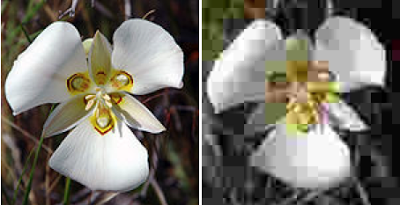
PNG: (Portable Network Image)
PNG's were developed to transfer images over the Internet,
they can be created with or without an alpha channel (transparent background)
and support lossless data compression meaning very little data is lost allowing the image to generally maintain its quality. Below you can see a comparison between the JPEG and PNG formats, as the PNG can undergo lossless compression it is better at displaying high contrast bold lines and solid colours than the JPEG which will produce artefacts which is why the text looks clearer and more defined in the PNG image. However, due to the compression for most high detail photographic images with more colours and details the PNG will produce a much large file with no signifcant change in quality which is why the JPEG is prefered for photography. The
concept of the PNG file was first thought of in 1995 as a replacement for the
GIF however the format does not support animations. The file format itself was
developed in 1996. The format is widely supported and commonly used in images
especially online as it allows for very crisp details in text and visual graphics displayed on webpages.
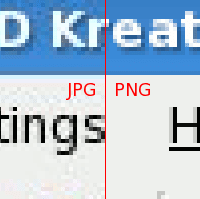
GIF: (Graphics Interchange Format)
GIF's were developed in 1987 as a bitmap image
format, the format holds up to 256 colours, which in comparison to more modern
formats isn’t many however unlike most formats GIF's also support animations which can be seen below with the image of the earth rotating.
The main frame of the GIF acts as the thumbnail image, and then the additional
frames come in to form the animation, the frame rates can be adjusted however
the more frames the larger the size will be. The GIF has a lossless data compression meaning data is not lost and file size is reduced, however due to
the limited colours GIF's cannot be used to show high quality images.
PSD: (Photoshop Document)
PSD is an image format that is very useful,
this is because unlike most formats it can store additional information about
the image such as the layers and effects that were used to create the image
within Photoshop which is very useful. However, because the extra information is stored within the file the file sized is usually considerably large than the same image being held within an alternative format, meaning that sharing the PSD file across a slower bandwith may take a long time. Also, because Photoshop is widely used, the PSD format can be
accessed through other forms of software from Adobe. One disadvantage to the
PSD format is that it has a limit on dimensions and also files size, from 30000
pixels to 2GB. However, one solution to this is a larger version of the PSD format,
which allows an extended file size, and larger dimensions. Another significant issue with this format is that it is difficult to view unless you have specified software to view the image as most standard programs do not allow the PSD to be viewed.
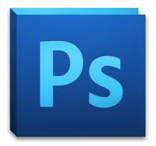
RAW
RAW image formats are the original files containing
data directly from the camera, there is no processing or compression in-between to convert
the RAW image into a standard file format such as a JPEG. Because of this the
Raw files contain all of the original information and are of a higher quality
than other file formats. Raw files can not always be used directly and are sometimes difficult to view due to most camera models producing their own RAW format to hold the image in. However, once the image is accessable an individual has much greater control over the image which is why they are a prefered format for photographers who can then fully adjust the image afterwards. Another disadvantage of the RAW format is that because it stores all of the orginal data from the camera with no compression the file size is considerably larger than most standard file formats such as the JPEG used in photography. In the images below you can see the JPEG image has higher contrast and is also brighter due to the processing that occured in the camera to produce the image. Initially the RAW photo does look worse than the JPEG as it will need to be manually adjusted to create the correct contrast, brightness and colour balance but this gives the photographer greater control over their work.
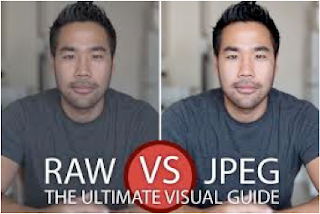
Exif: (Exchangeable Image File Format)
Exif was developed by the Japan Electronic
Industries Development Association in 1998, and is used to store metadata
within the original file format. This data can include the date, time and even
model of the camera, this is useful as it allows users to be able to access
information about an image that is otherwise not available in other
formats.
Tiff: (Tagged Image File Format)
Tiff was developed as a standard format for
scanners in the 1980’s, the original version could only handle two set values for
each pixel being black or white, but as scanners developed so did the format
meaning that today the TIFF format can support black and white, greyscale and a high range of colours with very high detail. The format is widely supported due to it being a successful way to
store image data, however one main disadvantage to the format is that there is
a file size limit of 4GB which may prevent some necessary larger files from being produced.
PDF: (Portable document Format)
PDF was developed in the 1990’s as a way of
sharing documents between different devices that may use different softwares
and operating systems etc. The PDF contains the document, text, fonts, sizes
and all additional information needed to display the image. One disadvantage of
the PDF especially in the past is that due to the large file size the document
did take a long time to download on slow connections and on slower systems the
document did take a while to open and render. An advantage is that you can open
PDF's in the web browser as well as on different systems and versions of
software.
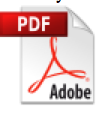
PCX:(Personal Computer Exchange)
PCX was one of the first file formats to be
used as an imaging standard, however it has been overtaken by more advanced
formats such as JPEG and PNG. The format can hold a variety in the number
of colours ranging from 16 to 16.7 million which also means there is a large
variation in the quality. The format also works with a simple lossless
compression rate; meaning very little data is lost when compressing the image to maintain a higher quality with reduced file size.
WebP
WebP is a new file format being developed by
Google, it was first announced in 2010 to be a replacement for most image
formats such as the JEPG and PNG due to its matching image quality with a
significant reduced file size for the image. This is very useful to modern
standards as more images are shared on the web, meaning an image with a reduced
file size and matching image quality web pages will be able to load much faster
and the images can be transferred at a much higher rate even across slower bandwiths. The file supports a
lossless compression format and is also being developed to support animation,
just like GIF's making it a potential future standard for all images in the future. Below you can see there is negligible difference between the WebP and JPEG images, yet the WebP has a reduced file size which is very beneficial.





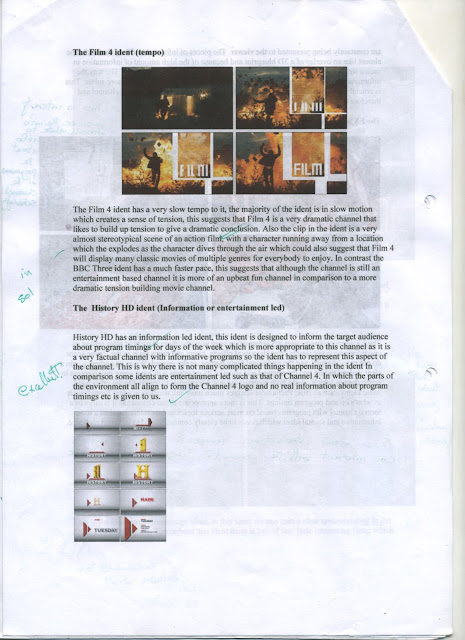












.gif)







